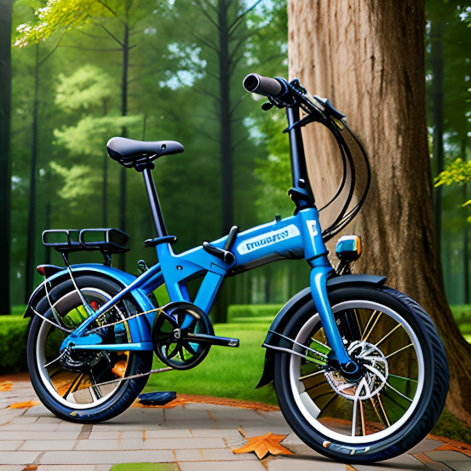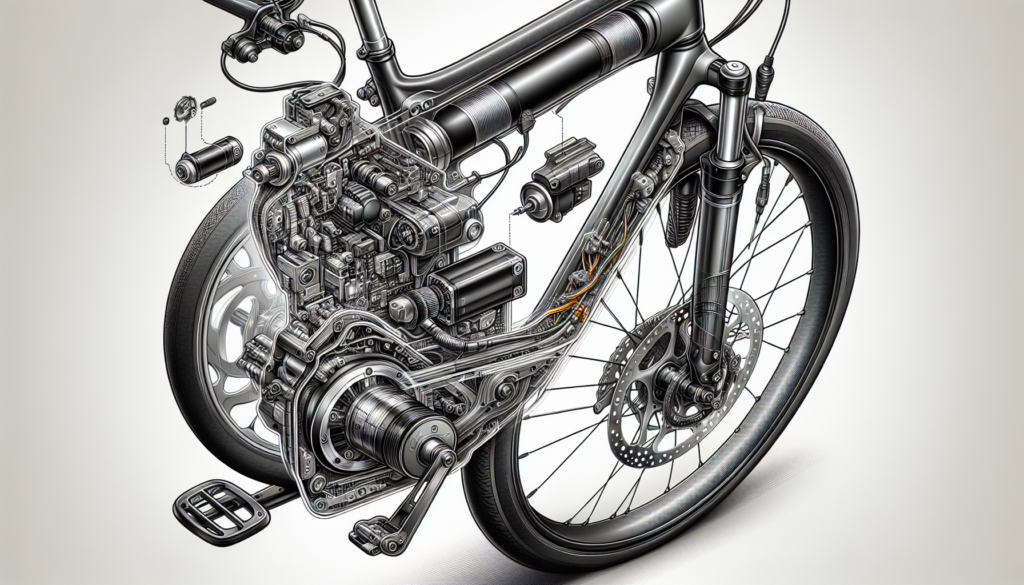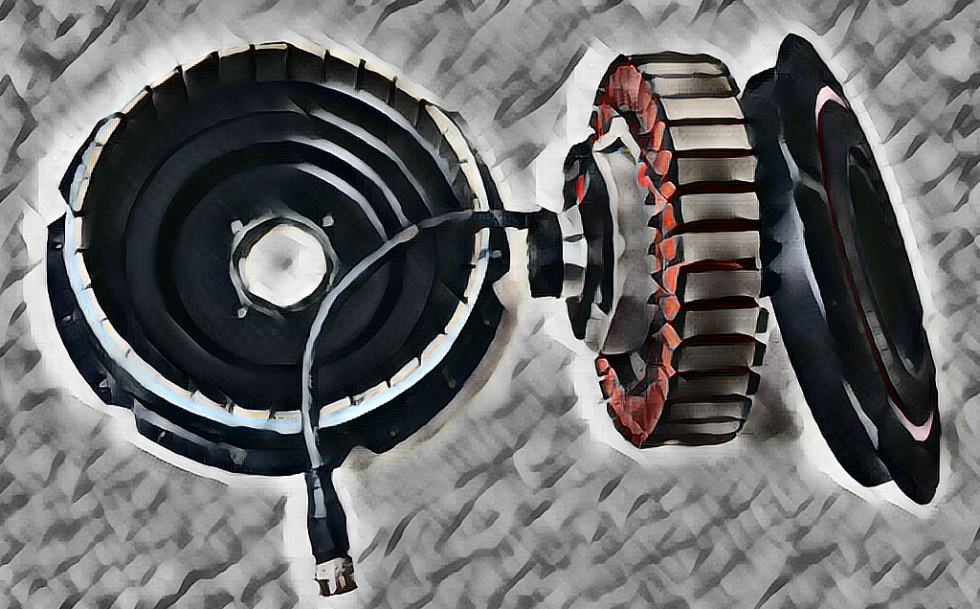Imagine effortlessly cruising through the streets with the wind in your hair, powered by an eco-friendly and efficient machine. Have you ever wondered how electric bikes work? In this article, we will unravel the mysteries behind these futuristic marvels, explaining the technology that enables them to revolutionize how we commute and enjoy our outdoor adventures. Let’s embark on a journey of discovery as we unravel the inner workings of electric bikes, revealing the secrets of their silent power and seamless ride.
Electric Bikes: An Overview
Electric bikes, also known as e-bikes, have become increasingly popular in recent years. These innovative vehicles combine the convenience and ease of a regular bicycle with the power and efficiency of an electric motor. With an electric bike, you can effortlessly conquer hills, cover longer distances, and enjoy a smooth and comfortable ride. In this article, we will provide an overview of electric bikes, including the different types, key components, and how they work.
Types of Electric Bikes
There are several types of electric bikes available on the market, each designed to cater to different riding preferences and needs. Some of the most common types include:
- Commuter e-bikes: These are perfect for daily commuting and urban riding, offering a comfortable and efficient mode of transportation with integrated features like fenders and lights.
- Mountain e-bikes: Built for off-road adventures, these bikes come equipped with rugged tires, suspensions, and powerful motors to tackle challenging terrains.
- Folding e-bikes: Ideal for those with limited storage space or for easy transportation, folding e-bikes can quickly fold down to a compact size, making them convenient for city dwellers or frequent travelers.
- Cargo e-bikes: Designed to carry heavy loads, cargo e-bikes feature large, sturdy frames and spacious cargo areas, making them perfect for grocery shopping or transporting goods.

Key Components of an Electric Bike
To understand how an electric bike works, it’s important to familiarize yourself with its key components. These components work together to deliver a smooth and efficient riding experience. Let’s explore each component in detail.
Electric Motor
The electric motor is the powerhouse of an electric bike, providing the necessary propulsion. There are three main types of electric motors used in e-bikes:
- Brushless Motors: These motors are lightweight, efficient, and require minimal maintenance. They are commonly found in hub motors.
- Hub Motors: Hub motors are integrated into the wheel hub and provide direct power to the wheel. They are popular for their simplicity and ease of use.
- Mid-drive Motors: Mid-drive motors are positioned near the bike’s bottom bracket, optimizing weight distribution and providing a more natural riding experience.
Battery
The battery is the energy source of an electric bike. Modern electric bikes use lithium-ion batteries, known for their high energy density and long lifespan. Battery capacity is measured in watt-hours (Wh) and determines the range an e-bike can cover on a single charge. Higher capacity batteries offer longer riding distances. Charging the battery is as simple as plugging it into any standard electrical outlet.
Controller
The controller serves as the brain of an electric bike, regulating the flow of electricity between the battery, motor, and other components. It receives input from the rider and translates it into specific actions, such as controlling the speed and power output of the motor. The controller also provides important information about battery life and assists in controlling various functions of the e-bike.
Throttle
The throttle, similar to that of a motorcycle or scooter, allows the rider to control the speed of the electric bike with ease. There are different types of throttles, including thumb throttles, twist throttles, and pedal-assist throttles. Throttles provide instant acceleration and are especially useful when climbing hills or starting from a complete stop.
Sensor
Sensors play a crucial role in providing assistance and determining the level of motor engagement. There are different types of sensors commonly found in electric bikes:
- Pedal Assist Sensor: This sensor measures the force applied by the rider when pedaling and adjusts the motor assistance accordingly. It provides a more natural riding experience by mimicking traditional cycling.
- Torque Sensor: A torque sensor measures the pressure applied to the pedal and adjusts the motor output accordingly. This sensor offers a dynamic and responsive ride.
- Cadence Sensor: Cadence sensors measure the speed at which the rider is pedaling. They provide assistance based on the pedaling speed and can be adjusted to suit individual preferences.
- Combined Sensors: Some electric bikes utilize a combination of sensors to provide a more sophisticated and versatile riding experience, taking into account factors such as pedaling force and speed.
Display Panel
The display panel is located on the handlebars and provides important information about the electric bike’s status and performance. It typically shows details such as speed, battery level, distance traveled, and various riding modes. The display panel allows riders to easily monitor their e-bike’s parameters and adjust settings on the go.
Electric Bike Components: The Integration
While the individual components of an electric bike are important, it is their integration and seamless operation that truly enhances the riding experience. Wiring and connectors ensure the smooth communication between different parts, allowing for efficient power flow and control. Quality components and proper integration are crucial for a reliable and enjoyable electric biking experience.

Working of an Electric Bike
Understanding how an electric bike works will give you a deeper appreciation for the technology behind it. Let’s walk through the basic steps of powering on, accelerating, riding, and powering off an electric bike.
Powering On
To start your electric bike, make sure it is properly charged and turned off. Press the power button or key to turn it on. The display panel will light up, showing important information like the battery level and selected riding mode. Some models may require additional steps such as entering a pin or passcode.
Accelerating and Riding
Once the electric bike is powered on, you can start pedaling. The pedal assist sensor or torque sensor will detect your pedaling force and engage the electric motor accordingly. You can control the level of assistance or choose from different riding modes using the display panel. Depending on the mode selected and the amount of assistance you desire, the motor will provide additional power to augment your pedaling efforts.
Regenerative Braking
Many electric bikes feature regenerative braking, which harnesses the energy generated during braking and converts it back into electricity to recharge the battery. When you apply the brakes, the motor switches into generator mode, slowing down the bike while recuperating some of the energy that would otherwise be lost. This feature helps extend the range of the electric bike and increases overall efficiency.
Powering Off
When you have finished your ride, it’s time to power off your electric bike. Simply press the power button or key once again to turn it off. Make sure to remove the battery if necessary or ensure the bike is properly secured if left unattended. Charging the battery after each ride will ensure it is ready for your next adventure.
In conclusion, electric bikes are revolutionizing the way we commute and enjoy cycling. With their powerful motors, long-lasting batteries, and innovative components, electric bikes offer an efficient, eco-friendly, and enjoyable mode of transportation. Whether you’re looking for a smooth city cruise or an off-road adventure, an electric bike is sure to enhance your riding experience. So hop on, power up, and enjoy the thrill of electric biking!


